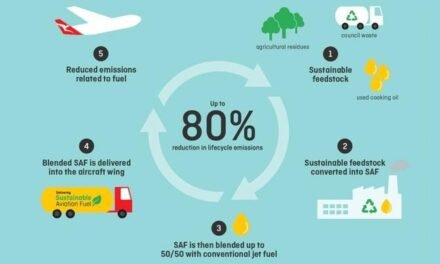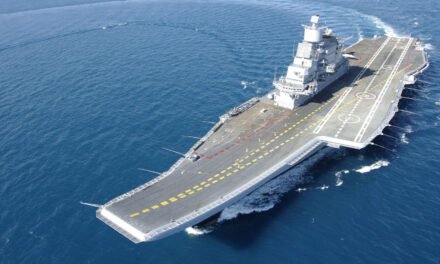Green aviation technologies encompass innovative approaches, designs, and practices that aim to reduce the environmental impact of aviation, including greenhouse gas (GHG) emissions, noise pollution, and resource consumption. These technologies are crucial for making aerospace more sustainable while meeting increasing regulatory and societal demands for eco-friendly transportation. Here’s a detailed overview:
Key Green Aviation Technologies
1. Sustainable Aviation Fuels (SAFs)
- Description:
- SAFs are alternative fuels derived from renewable resources like biomass, algae, waste oils, and agricultural residues.
- Impact:
- Can reduce lifecycle carbon emissions by up to 80% compared to fossil fuels.
- Compatible with existing aircraft engines and fueling infrastructure.
- Examples:
- Hydroprocessed Esters and Fatty Acids (HEFA), synthetic fuels via Power-to-Liquid (PtL) processes.
2. Electric and Hybrid-Electric Propulsion
- Electric Aircraft:
- Fully electric systems powered by advanced batteries or fuel cells eliminate in-flight emissions.
- Hybrid-Electric Systems:
- Combines traditional engines with electric propulsion for improved fuel efficiency.
- Impact:
- Ideal for short-haul and regional routes, reducing noise and emissions.
- Examples:
- Eviation’s Alice electric aircraft, Airbus’ E-Fan X project.
3. Hydrogen Propulsion
- Description:
- Hydrogen can be used in two main ways: as a fuel for combustion engines or in fuel cells to generate electricity.
- Impact:
- Produces zero CO₂ emissions, with water vapor as the main byproduct.
- High energy density enables long-range flights.
- Challenges:
- Requires new infrastructure for production, storage, and distribution.
- Examples:
- Airbus ZEROe hydrogen-powered aircraft concepts.
4. Advanced Aerodynamics
- Wing and Airframe Innovations:
- Blended wing body (BWB) designs and laminar flow control reduce drag, improving fuel efficiency.
- Morphing Wings:
- Adaptive structures that change shape during flight for optimal aerodynamics.
- Impact:
- Significant fuel savings and reduced emissions.
5. Lightweight Materials
- Description:
- Use of carbon fiber composites, advanced alloys, and nano-materials to reduce aircraft weight.
- Impact:
- Lighter aircraft require less fuel, cutting emissions and improving performance.
- Examples:
- Boeing 787 and Airbus A350 heavily utilize composite materials.
6. Energy-Efficient Engines
- Open Rotor Engines:
- Offer improved efficiency by exposing fans for better air propulsion.
- Geared Turbofan Engines:
- Reduce fuel consumption and noise through optimized gear systems.
- Impact:
- Greater thrust with lower fuel burn and emissions.
7. Noise Reduction Technologies
- Quiet Engines:
- Incorporate acoustic linings and innovative fan designs to reduce noise.
- Aerodynamic Refinements:
- Wingtip devices and smoother surfaces reduce turbulence-related noise.
- Impact:
- Minimizes the environmental footprint in noise-sensitive areas near airports.
8. Recycling and Circular Economy Practices
- End-of-Life Aircraft Recycling:
- Reusing and recycling materials from decommissioned aircraft reduces waste.
- Recyclable Components:
- Designing parts for easy disassembly and reusability.
Importance of Green Aviation Technologies
1. Environmental Benefits
- Emission Reduction:
- Aviation contributes ~2.5% of global CO₂ emissions; green technologies aim to minimize this impact.
- Combat Climate Change:
- Reducing GHG emissions aligns with global climate targets, such as the Paris Agreement.
- Biodiversity Protection:
- Noise and chemical pollution reduction help protect ecosystems around airports.
2. Regulatory Compliance
- Governments and international bodies like ICAO and EU ETS impose stricter environmental regulations.
- Green technologies ensure compliance with carbon offset programs like CORSIA (Carbon Offsetting and Reduction Scheme for International Aviation).
3. Economic Viability
- Cost Savings:
- Energy-efficient aircraft reduce fuel costs, which account for ~30% of airline expenses.
- Future Market Demand:
- Consumers and investors are increasingly favoring environmentally responsible businesses.
4. Industry Innovation and Leadership
- Early adoption of green technologies positions manufacturers and airlines as leaders in sustainability.
- Drives technological innovation with potential spillovers into other sectors.
5. Sustainability Goals
- Aligns with global efforts to achieve net-zero emissions in aviation by 2050.
- Supports the UN Sustainable Development Goals (SDGs), particularly SDG 13 (Climate Action).
Challenges and Outlook
- Technological Barriers:
- Battery energy density, hydrogen storage, and SAF scalability remain challenges.
- Cost and Investment:
- High upfront costs require collaboration between governments, manufacturers, and airlines.
- Infrastructure Needs:
- Airports and fueling systems must adapt to accommodate new technologies.













